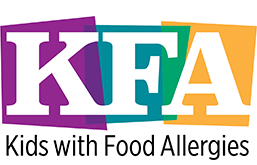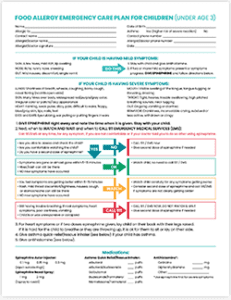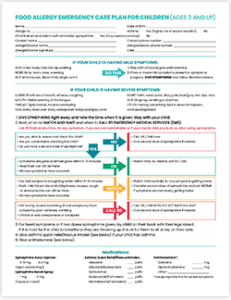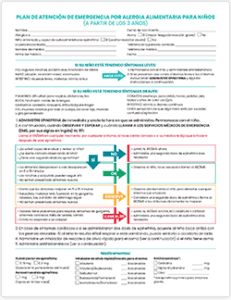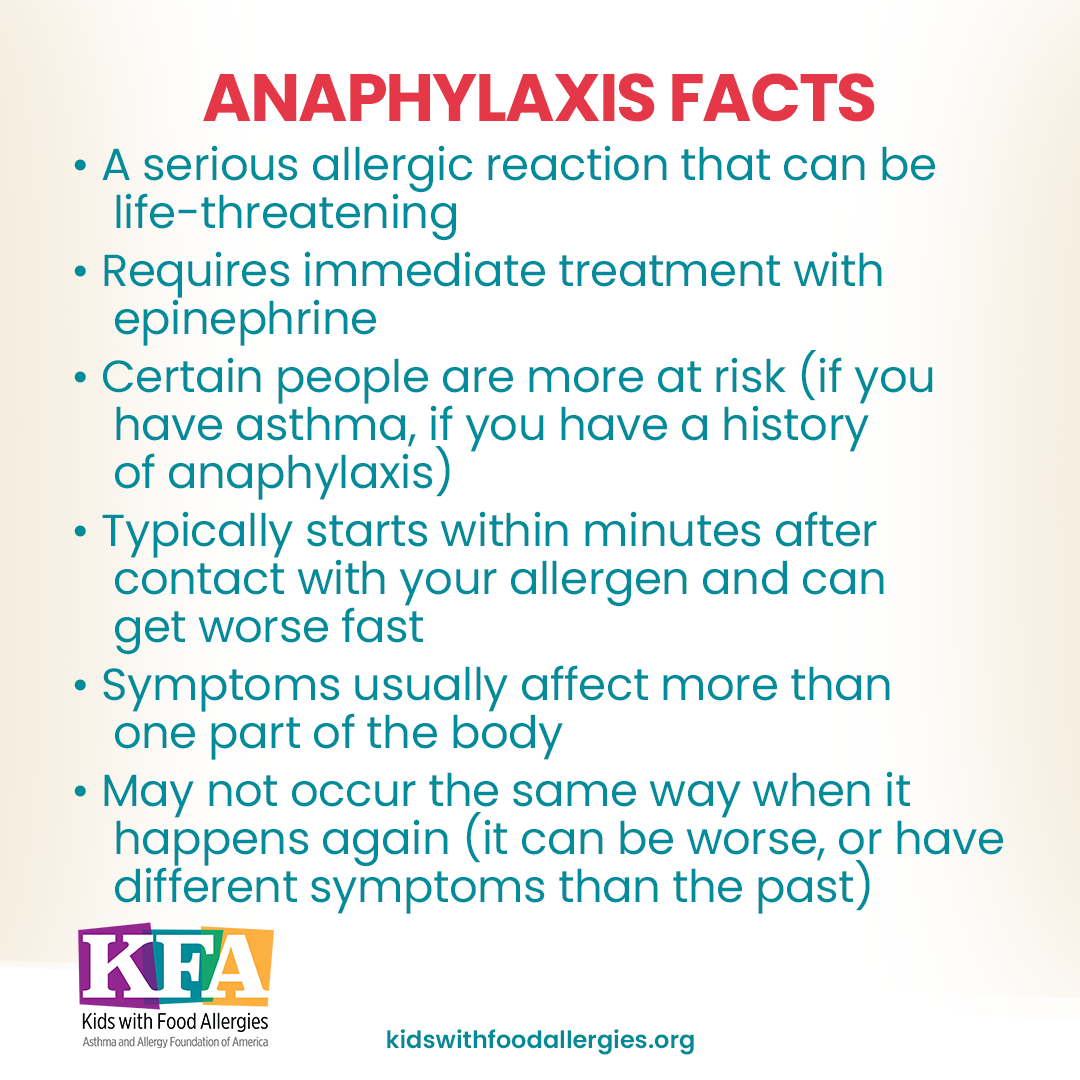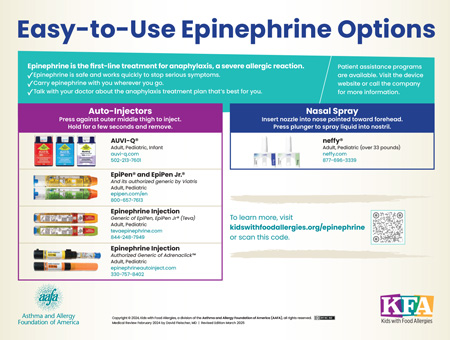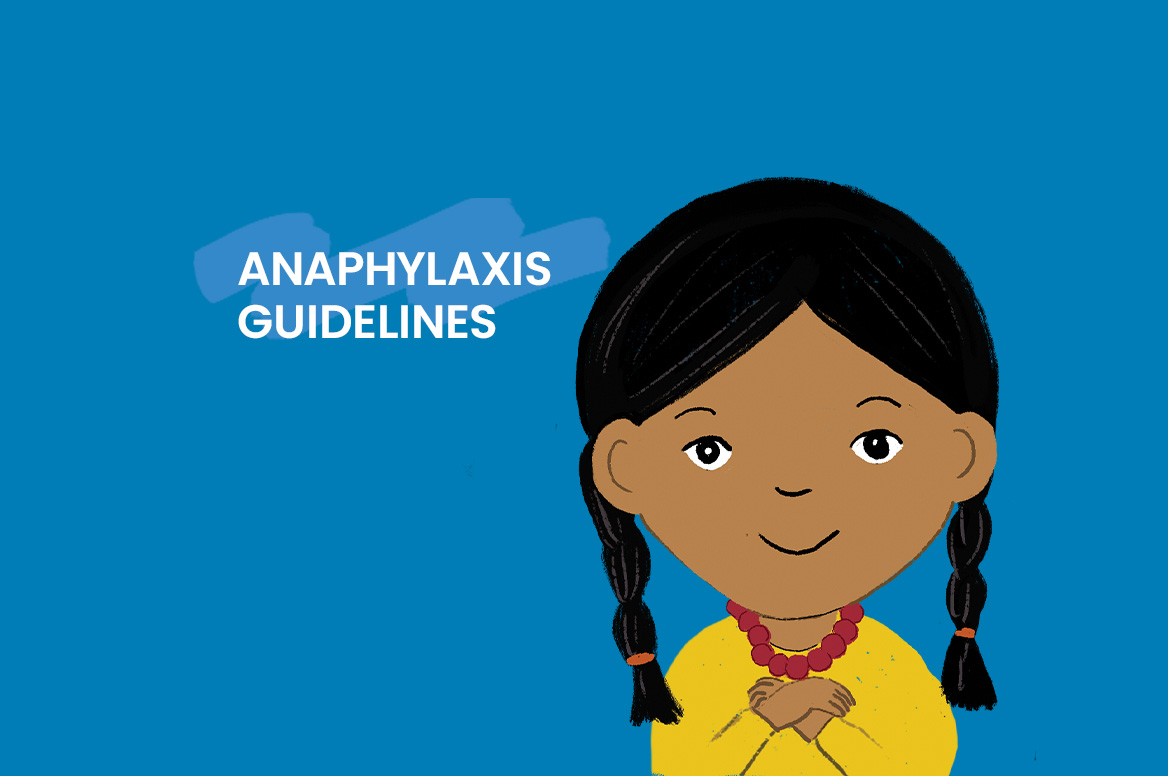Living with Food Allergies

Food Allergy Action Plan for the Treatment of Anaphylaxis
Anaphylaxis [anna-fih-LACK-sis] is a serious allergic reaction that can progress rapidly. It may involve multiple body organ systems. Epinephrine is the first-line treatment for anaphylaxis. People with food allergies should have a food allergy action plan to help guide them on recognizing symptoms and prompt treatment to stop the reaction.
- Symptoms to watch in infants/toddlers or children ages 3 and older (including teens and adults)
- Instructions for using epinephrine
- What to do in an emergency
Take the form below to your doctor and have them fill it out and review it with you. This plan can be shared with schools, babysitters, and other caregivers of kids with food allergies.
Additional languages for Food Allergy Emergency Care Plan for Under Age 3:
Additional languages for Food Allergy Emergency Care Plan for Age 3 and Up:
Symptoms of Serious Allergic Reactions (Anaphylaxis)
Signs and symptoms of anaphylaxis in children, teens, and adults include:
- Skin rash, itching, hives
- Swelling of the lips, tongue, or throat
- Shortness of breath, trouble breathing, wheezing, coughing
- Stomach pain, vomiting, diarrhea
Common signs and symptoms of anaphylaxis in infants and toddlers include:1
- Skin rash, itching, hives
- Swelling of the lips, tongue, or throat
- Stomach pain, vomiting, diarrhea, spitting up
- Tongue thrusting, tongue pulling, licking lips repeatedly, ear pulling
- Arching back, bringing knees to the chest
- Coughing, wheezing, hoarse voice, belly breathing, chest or neck “tugging”
- Rubbing eyes, itchy or red eyes
Treatment for Anaphylaxis
Epinephrine works quickly and can stop the symptoms of a serious allergic reaction. It is important to use it immediately. Epinephrine is the only proven treatment for anaphylaxis to reduce the risk of hospital stays or even death.
Closed
References
- Pistiner, M., Mendez-Reyes, J. E., Eftekhari, S., Carver, M., Lieberman, J., Wang, J., & Camargo, C. A. (2021). Caregiver-reported presentation of severe food-induced allergic reactions in infants and toddlers. The Journal of Allergy and Clinical Immunology: In Practice, 9(1). https://doi.org/10.1016/j.jaip.2020.11.005
- Anagnostou, A., Abrams, E. M., Anderson, W. C., Carver, M., Eftekhari, S., Golden, D. B., Jaffee, H., Lieberman, J. A., Mack, D. P., Mustafa, S. S., Shaker, M. S., Spergel, J. M., Stukus, D. R., Wang, J., & Greenhawt, M. (2025). Development of a Validated, Updated North American Pediatric Food Allergy Anaphylaxis Management Plan. Annals of Allergy, Asthma & Immunology. Advance online publication. https://doi.org/10.1016/j.anai.2025.03.027
